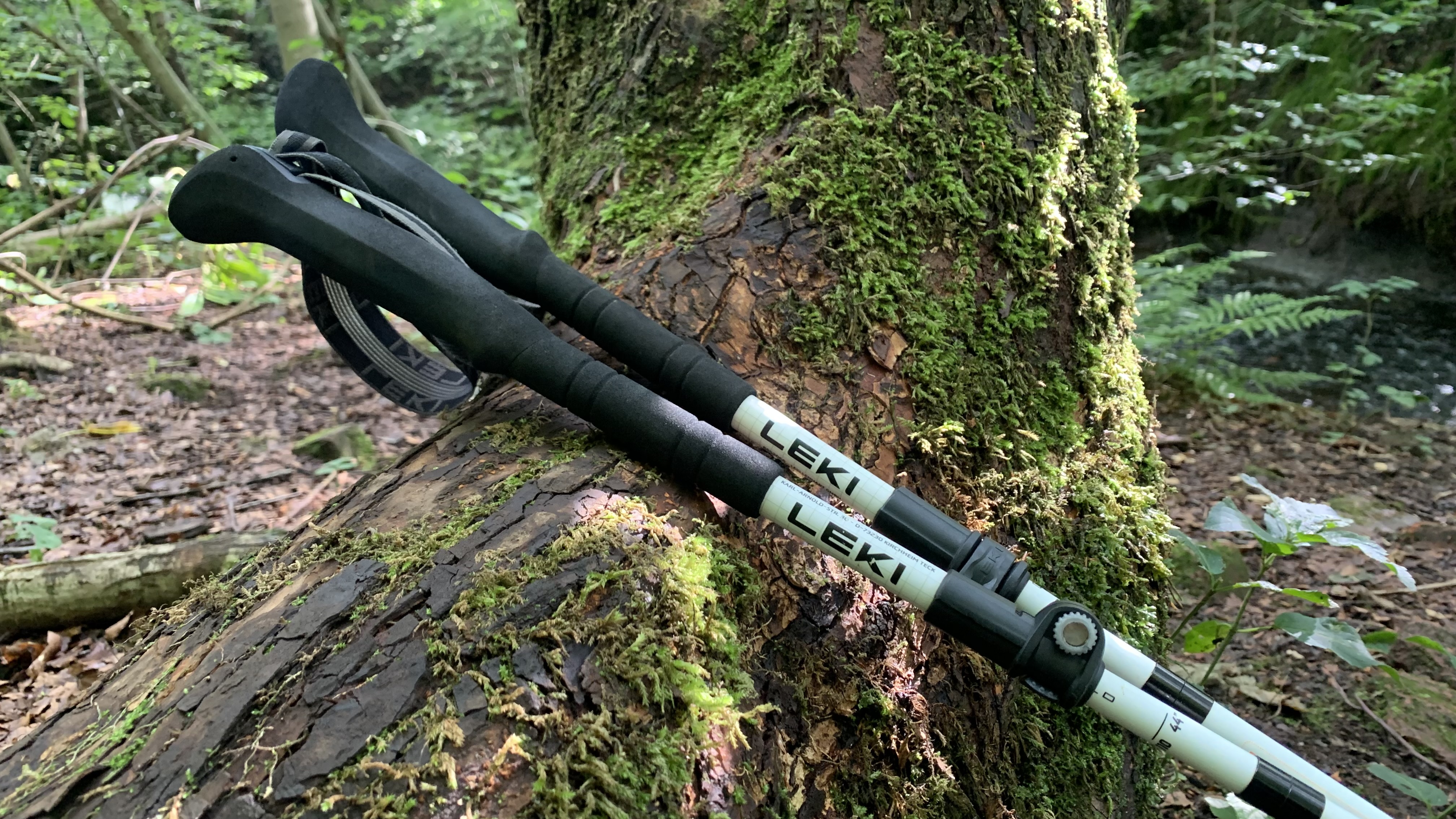Advnture Verdict
Leki is a proven leader in trekking poles, and the Skytera FX Carbon SL are a joy to use for anyone seeking lightweight support that's comfortable in the hands over a long day on the trail and easy to pack away when you want to trek unencumbered
Pros
- +
Ultralight and packable
- +
Easy to deploy (once you know how)
- +
Extra long length with loads of adjustability
- +
Foam grips are comfortable even with all-day use
- +
Easy-to-adjust wrist straps
- +
Mesh carry bag included
Cons
- -
Pricey
You can trust Advnture
Leki Skytera FX Carbon SL trekking poles: first impressions
When you're in the market for a new pair of trekking poles, Leki is likely one of the first places you'll look if you're seeking quality and reliability, and the Skytera FX Carbon SL is yet another model worth commending for those who want to move fast and light but feel supported.
Designed for fastpackers and thru-hikers, these poles are extraordinarily light – so much so that we're using them for trail running as well as hiking. Built from carbon with a foam grip, they barely register in your hands or your pack, but when you're seeking stability on rough ground, they get the job done.
Combining Z-shaped and telescope design approaches, these poles only come in one size, but they are extremely versatile, adjusting between 43in and 51in (110cm and 130cm) in length, which means they're long enough for very tall people and different activities.
They comprise three sections that are each less than 16 inches long, which makes them easy to pack into the mesh bag provided and stash in the side pocket of your backpack. When you want to use them, you can extend them by pulling until you hear a click, and then adjust them to your desired length using the telescoping.
• List price: $219.95 / £180
• Variable length: Yes
• Weight (per pair): 12oz / 340g
• Materials: Carbon shaft, carbide tips, Verticon foam grip
• Folded length: 15.7in / 40cm
• Operational length: 43-51in / 110-130cm
• Best use: Hiking, trekking, fastpacking, backpacking, thru-hiking, trail running
The wrist leashes are easy to adjust with a tug and the ergonomic foam grips are a joy to hold in the hands, even over a long day on the trail. The tips are made from carbon too and provide good traction on rock as well as grassy trails, while the minimalist baskets provide just enough width to keep you from sinking in on muddy trails.
It's true that carbon poles can be more prone to breakage, but only when you use them incorrectly and place weight on them in a horizontal position. In our months of field tests on the trek to Everest Base Camp, in the Swiss Alps, Yorkshire Dales National Park and the Scottish Highlands, we've experienced nothing but high quality and resilience with these poles. You can learn more in our article on aluminum vs carbon fiber trekking poles.
Of course, for all that, you'll pay a high price, and the only mark against these poles is the cost.
All the latest inspiration, tips and guides to help you plan your next Advnture!
Leki Skytera FX Carbon SL trekking poles: in the field
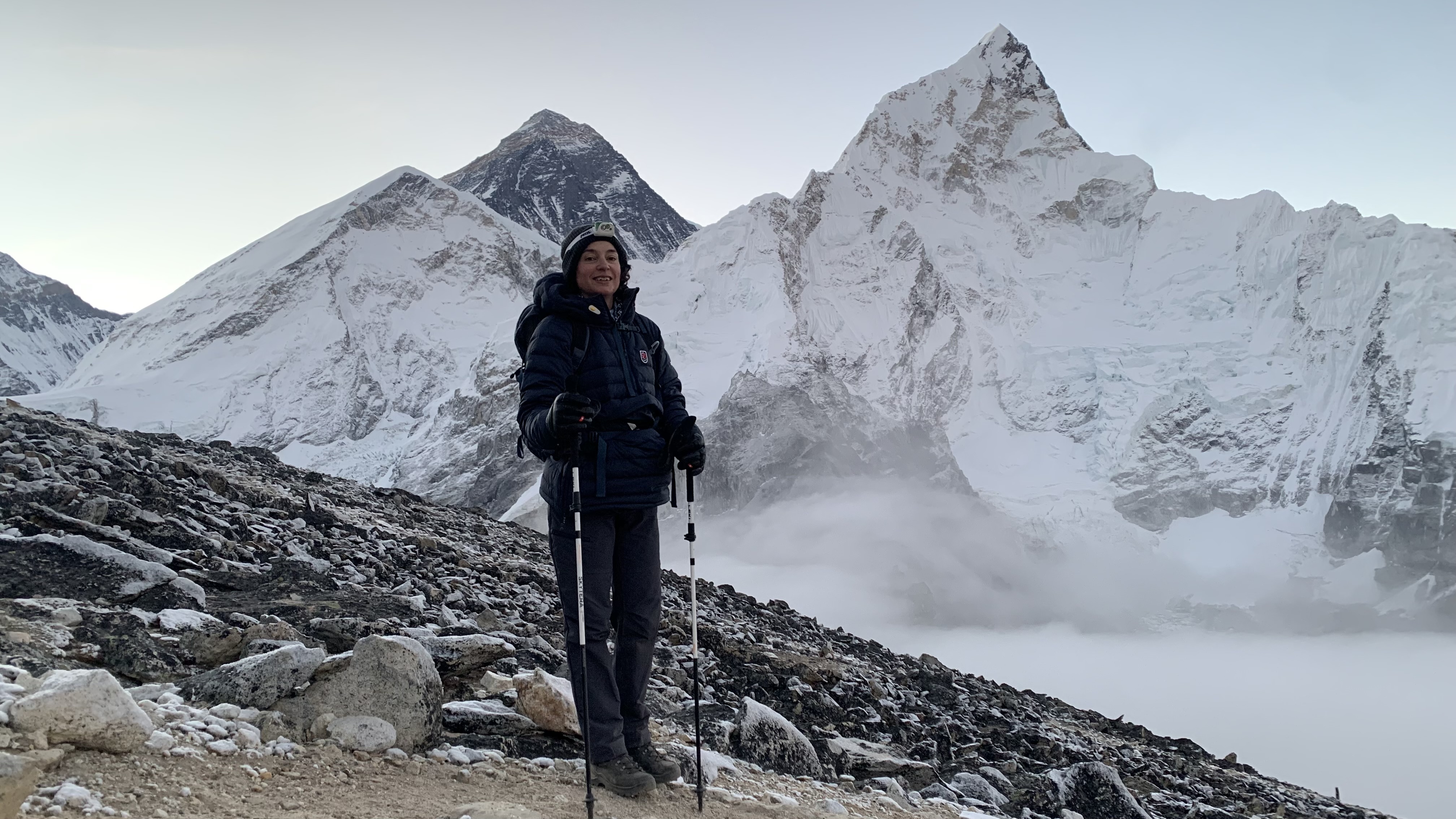
I've been using Leki poles since I tore my ACL in a skiing accident nearly 10 years ago, but my original pair are starting to show the signs of the many hundreds of miles I've put on them, and one has an annoying habit of collapsing when I put weight on it. So when I signed up to trek to Everest Base Camp this spring, I decided it was time for a new pair.
Luckily for me, Leki had recently released the Skytera FX Carbon SL, and I got these a few months early which meant I could train with them. By the time I flew to Nepal I had put about 100 miles in with them, and since I've returned I've continued hiking and trail running with them in Scotland, during a trip to the Swiss Alps and on a five-day thru-hike in the Lake District National Park.
Here’s how they performed:
Design and adjustability
In the past, trekking poles were either telescopic, meaning they extend and retract using sliding sections but don't fold up, or they were z-shaped, meaning they collapse into sections. With the Skytera, Leki has combined these two approaches so these poles are both very adjustable and can be folded away easily when not in use.
To deploy them, you just hold the handle and the top of the highest section of the shaft and and pull until you hear a click (I did have to find a YouTube video to get this right the first time, but after that it's easy). Then you can adjust the length and secure them with the locking mechanism. To fold them up, you just do the same in reverse. The wrist leashes are also easy to loosen or tighten with simple tug and stay in place when I'm putting weight on them.
Sometimes you sacrifice functionality when you try to do too many things at once – for example, a multi-tool is a great thing unless you need a really great blade, in which case a pocket knife is a better choice – but as far as I can see, this is a winning formula.
These poles can be really long, which makes them ultra versatile for different activities and different users. My older poles are great for me, but I'm 5'4", so they're too short for my nearly-six-foot boyfriend. These new poles can be telescoped out so that they're long enough for him, and I use them on the shorter end.
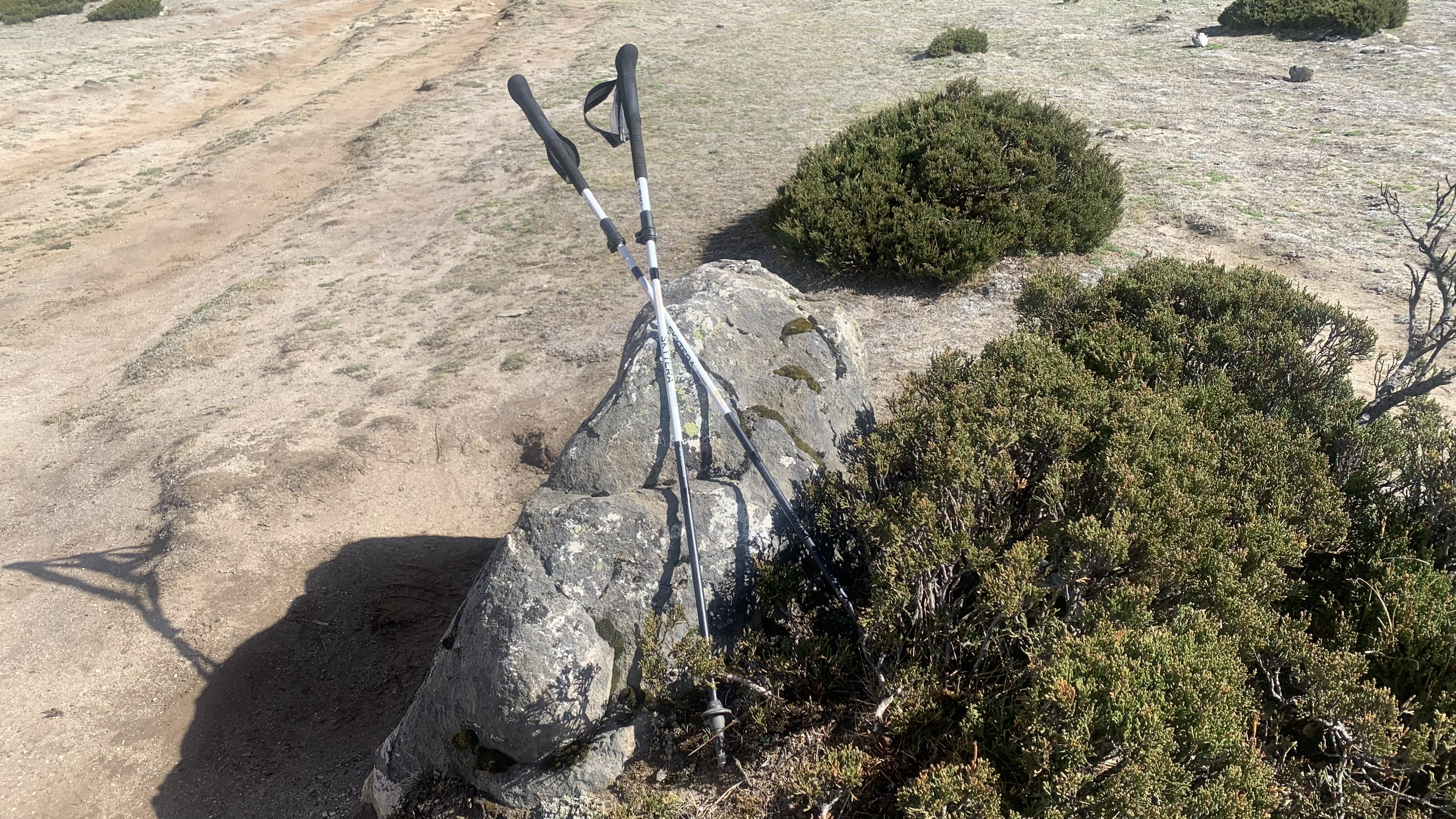
Weight and packability
At just 36oz (170g) per pole, these are significantly lighter than any of the trekking poles for hiking that we've tested, and they're comparable to – or lighter than – most of the running poles we've taken out in the field too. They feel extremely light in the hand and it makes them really easy to use all day.
Even though Leki doesn't advertise them as suitable for running, I quickly decided to try them out on a run. I didn't previously run with poles, but having had my aforementioned knee surgery, I had a feeling that doing so might give me more confidence, and I was right.
Not only have these taken over from my old poles for hikes, I've started bringing them with me for hill running where I even like using them on steep downhills, and they're so light I can happily just carry both in one hand for gentler descents. Their light weight also means that I don't even notice them when they're in the side pocket of my backpack or my running vest and they're slim enough when folded away to fit in most pockets.
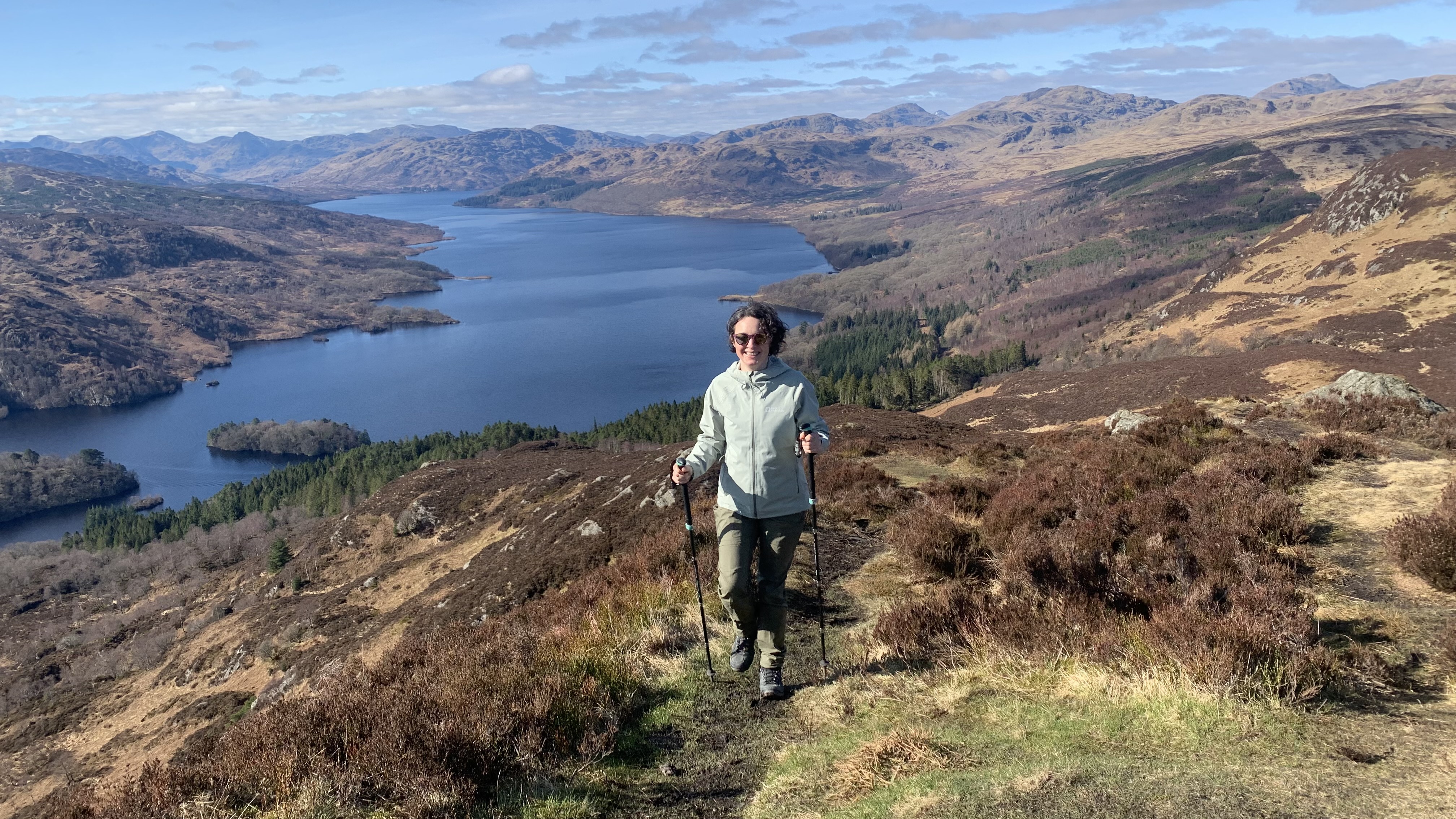
Comfort and durability
I've put some pretty long days in with these poles – for the 11-day trek to Base Camp we typically spent six hours a day walking, and I've had them out on some long training hikes too. Probably the most helpful thing I can say is that I don't really notice them in my hands, thanks to the foam that Leki has developed and the ergonomic design.
With my older poles, I'd sometimes get a bit of rubbing and even a blister after very long days but these don't seem to have any issues at all. They've also been comfortable whether it's hot and I'm sweaty or in the rain, when they don't get slippery.
Carbon poles have a reputation for not being as durable as those made from aluminum, and I'm sure that if you load these in the wrong position, they could break, but I have a sense that most outdoor kit would fail if you use it incorrectly, so this isn't something I'd detract points for, especially since it's the reason they're so light. All I can say is that with several hundred miles of use, they're still operating normally and I'm hoping they stay that way.
Also consider
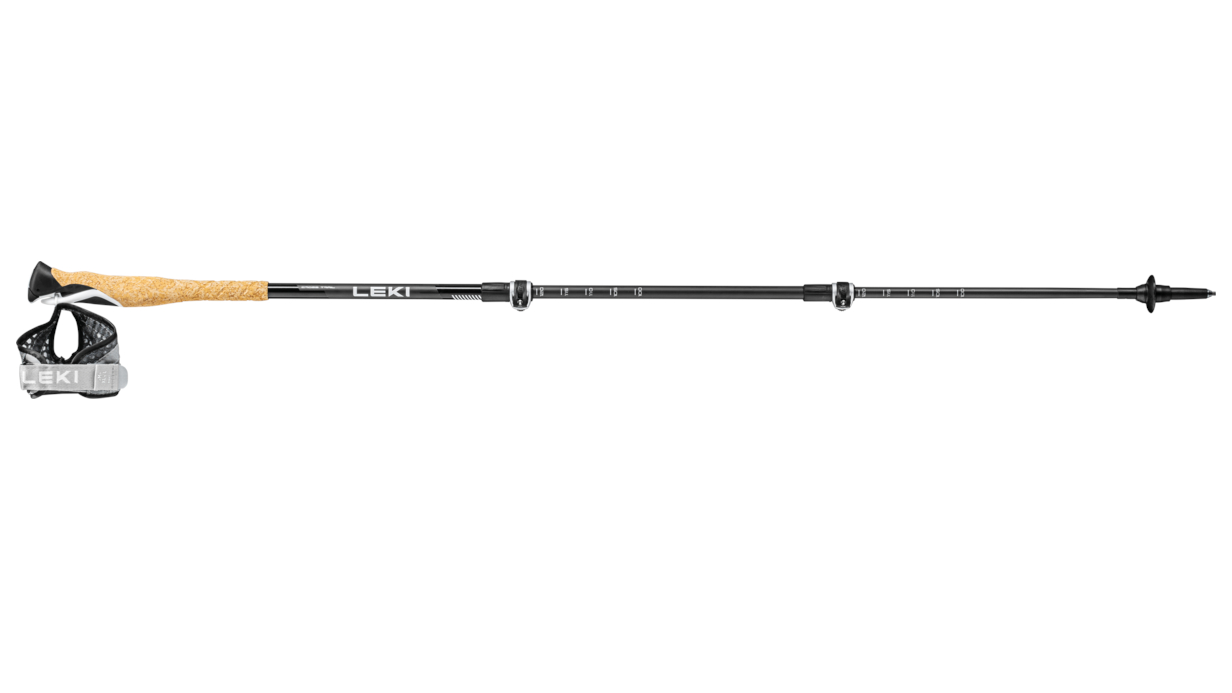
If you're in the market for lightweight, high quality poles that can function for both trekking and trail running, check out this alternative model from Leki. They're a little cheaper and slightly heavier, but they have the ergonomic faux cork foam handle along with the kind of breathable mesh, glove-style strap typically seen on running poles which isn't for everyone, but might be a bonus.
Read our full Leki Cross Trail Lite Carbon review.
Pros
- Lightweight carbon composite shaft
- Nicely packable
- Gloriously lightweight
- Suitable for running and hiking
Cons
- Carbon not as durable as aluminum
- Telescopic design heavier than similar collapsible poles
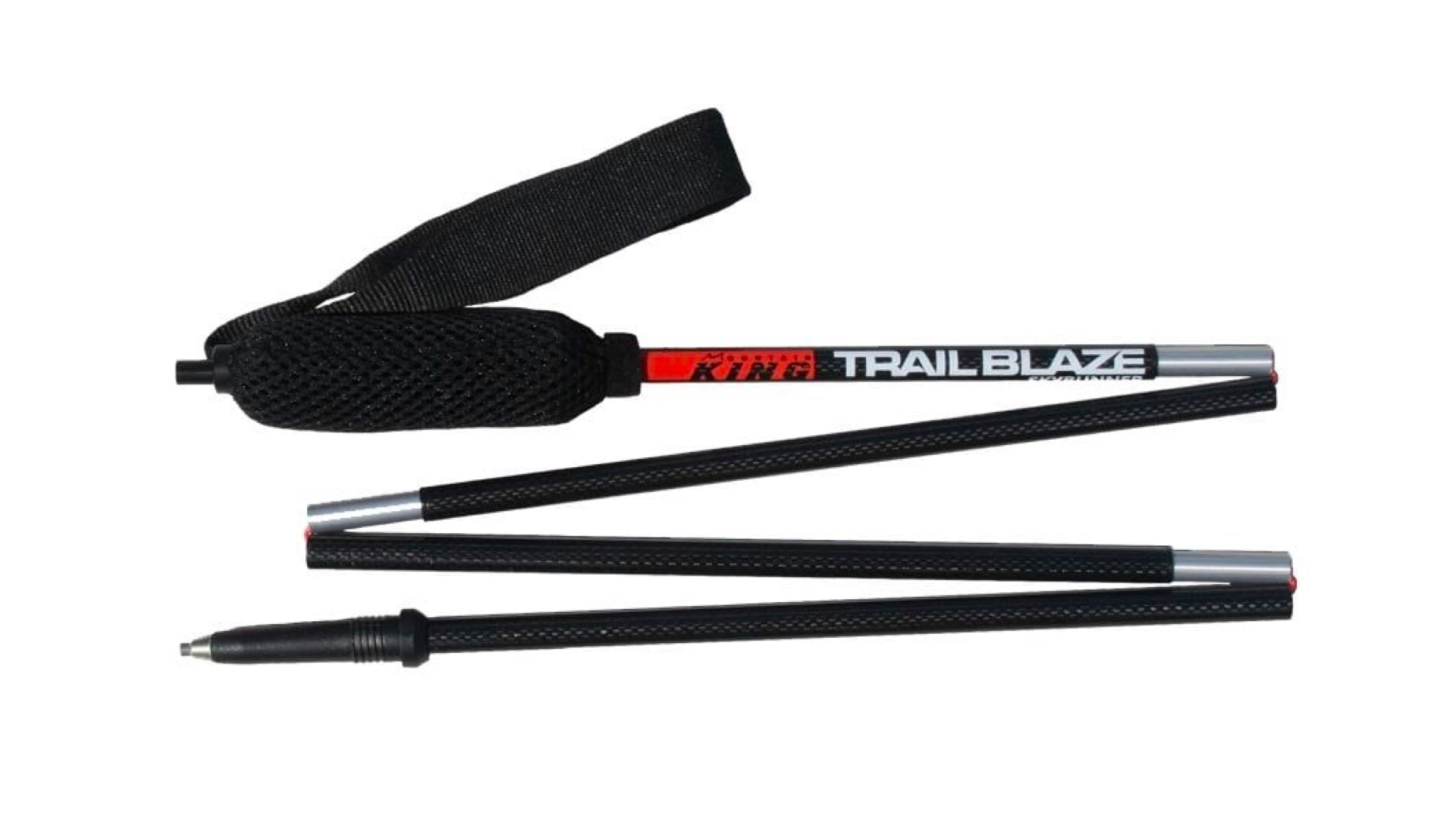
These poles are specifically for running, but they don't come with the glove strap so as far as we're concerned, they're fair game for hikers who want to pack light and move fast. Also made of carbon, they're only slightly heavier than the Lekis and they fold up in four sections, which makes them even more packable. They aren't telescopic, so they don't have the same range of length as the Lekis, but they're a fair bit cheaper, which might be persuasive.
Pros
- Ultra light
- Carbon
- Easy to assemble and re-fold
- Compact fold into four sections
- Large-sized mud baskets included
Cons
- Longer folded length may be harder to stow on your pack
- Handle material not comfy
- Not as strong as heavier poles
- No medium-sized mud basket option
Comparison table
Trekking poles | Leki Skytera FX Carbon SL | Leki Micro Trail Vario | Mountain King Carbon Skyrunner |
|---|---|---|---|
List price | $219.95 / £180 | $250 / £195 | $134 / £130 |
Variable length | Yes | Yes | No |
Weight (per pair) | 12oz / 340g | 13.8oz (390g) / 14.3oz (404g) | 7.9oz (224g) |
Folded length | 15.7in / 40cm | 15.3in (39cm) / 16.5in (42cm) | 11.8in (30cm) |
Operational length | 43–51in / 110–130cm | 39in–47in (100cm–120cm) / (43in–51in) 110cm–130cm | 43–51in (110cm–130cm) |
Best use | Hiking, fastpacking, mountain running | Hiking, fastpacking, mountain running | Hiking, fastpacking, mountain running |
Julia Clarke is a staff writer for Advnture.com and the author of the book Restorative Yoga for Beginners. She loves to explore mountains on foot, bike, skis and belay and then recover on the the yoga mat. Julia graduated with a degree in journalism in 2004 and spent eight years working as a radio presenter in Kansas City, Vermont, Boston and New York City before discovering the joys of the Rocky Mountains. She then detoured west to Colorado and enjoyed 11 years teaching yoga in Vail before returning to her hometown of Glasgow, Scotland in 2020 to focus on family and writing.
